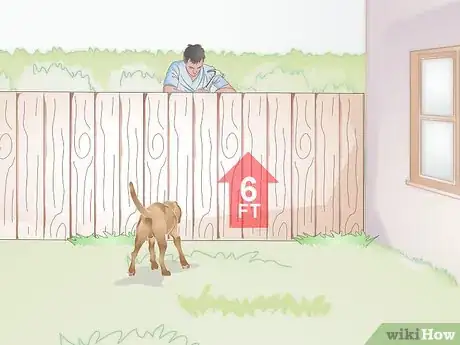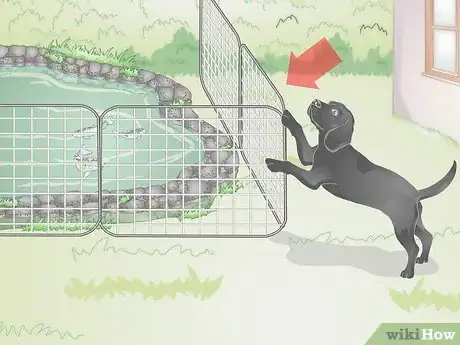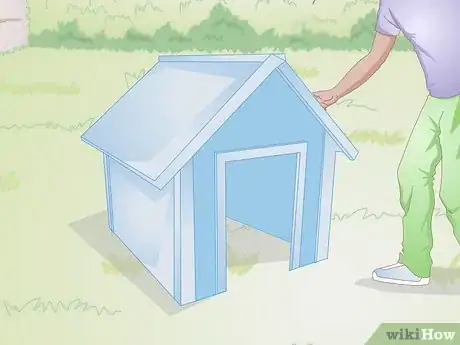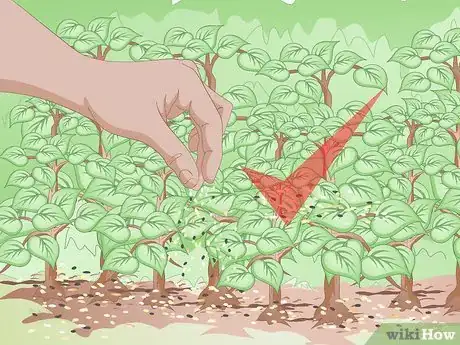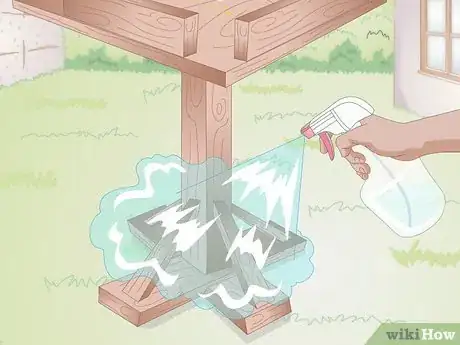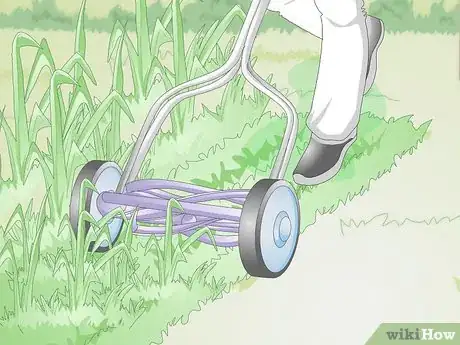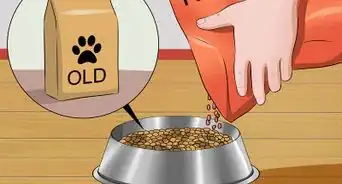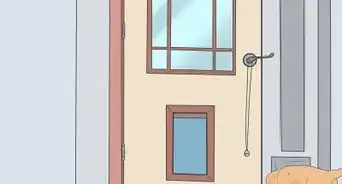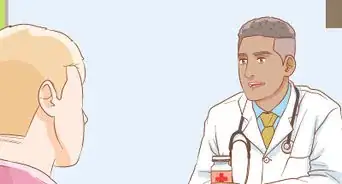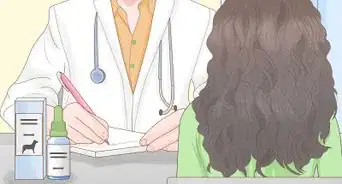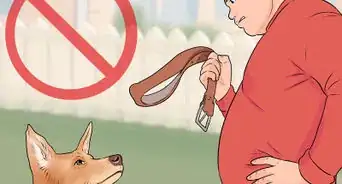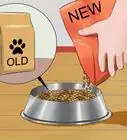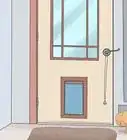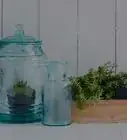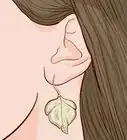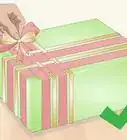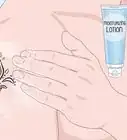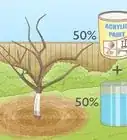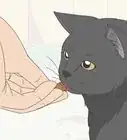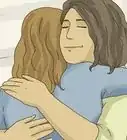This article was co-authored by Melissa Nelson, DVM, PhD. Dr. Nelson is a Veterinarian who specializes in Companion and Large Animal Medicine in Minnesota, where she has over 18 years of experience as a veterinarian in a rural clinic. She received her Doctor of Veterinary Medicine from the University of Minnesota in 1998.
There are 13 references cited in this article, which can be found at the bottom of the page.
This article has been viewed 20,454 times.
Dogs need to spend time outdoors in order to be healthy. However, your yard contains many hazards for a dog that need to be accounted for before you can let your dog out to play. If you create boundaries in your yard, remove toxic plants and other materials, and keep your lawn in good order. Your dog will have a safe, healthy environment to play in.
Steps
Creating Boundaries
-
1Install a fence.[1] A sturdy fence is the first step to keeping your dog safe in your backyard. With a good fence, your dog cannot escape the yard and other dogs or animals cannot get into the yard, where they could harm your dog.[2]
- Choose a fence material that meets your budget. Wood, steel, chain-link, and plastic all make good fencing materials.
- Make the fence at least six feet tall. The larger your dog, the taller the fence should be.
- After the fence is installed, walk the perimeter to check for spaces where your dog might be able to slip underneath. Install chicken wire in these areas.
- Repair any holes in the fence as they appear.
-
2Make a boundary around any water. Dogs are attracted to water, both to drink from and swim in. Even if your dog is a good swimmer, there’s danger in leaving them alone with a pool since they might not be able to get out of the pool if the edges are slippery.[3]
- Fence in your swimming pool or other water area with six-foot tall fencing.
- Don’t ignore smaller reflecting pools: a small dog can easily fall into a shallow pool and drown.
Advertisement -
3Provide a dog house. A dog house is essential to protect your dog from the elements. The dog house should be large enough for your dog to turn around in and it should be fully covered on top to protect your dog from rain, snow, and sunlight.[4]
- Choose a material that is suitable for your environment. If you live in a warm environment, use clay tiles on the floor of the dog house to keep your dog cool. In the winter, place a blanket on the floor to help keep your dog warm.
-
4Keep your dog from ruining your garden.[5] To keep your dog out of the garden, spray plants with white vinegar or apple bitter, both of which are natural concentrates with unpleasant odors designed to keep dogs away from certain areas. Alternately, you could plant marigolds between rows of plants and flowers you really want in your garden. Marigolds, like vinegar and apple bitter, contain a scent that dogs shy away from.[6]
- You can obtain apple bitter at your local pet store and white vinegar from your local grocer.
- Sprinkle powdered mustard and/or red pepper flakes around your plants. Dogs do not like these scents and will avoid areas where these odors abound.
- The potency of the anti-dog odors declines over time. Any measure you adopt to protect your garden will need to be renewed occasionally, especially after it rains.
- Do not use coyote urine or similar products in your garden. While it does effectively ward off deer and rabbits, coyote urine will attract dogs, and your dog will roll about in the garden and mark it as its own territory.
-
5Keep your dog from chewing on things it shouldn't. If your dog gets into other areas of the yard you don't want it to, you can solve the problem using the same solutions you used to keep your dog out of your garden. That is, spray white vinegar or apple bitter on other things you want to keep your dog from chewing. Or, for instance, if you have furniture in your yard that you want to keep your dog from chewing, sprinkle powdered mustard or red pepper flakes in a cordon around the furniture to keep your dog away.[7]
- Citrus is another scent that does not appeal to dogs. Spray concentrated lemon juice on any objects you do not want your dog chewing or scratching.
Eliminating Toxins in Your Yard
-
1Rid your yard of poisonous plants and weeds.[8] Many common backyard plants are toxic to dogs. For example, tulips, daffodils, azaleas, and amaryllis can all make your dog sick or even cause them to die.[9]
- Begin by talking to a vet about which plants are toxic to your dog. Different dog breeds are sensitive to different plants.
- Make an inventory of the plants in your backyard so you know how many toxic plants you have and where they are located.
- Remove the toxic plants or fence them in with chicken wire.
-
2Seal your garbage cans. Garbage cans are a source of many toxins. Common household items such as cleaning supplies and batteries can leave toxic sludge in the bottom of your garbage cans. If you dog gets into the cans, they might get sick.[10]
- Ideally, you should keep your garbage cans outside of the fenced area where your dog hangs out.
- If you must keep your garbage cans in the yard, make sure they have sealing lids and always seal the lids after you throw out the trash.
-
3Keep your dog away from treated grass. If you spray your yard with insecticides or weed killer, your dog may ingest these chemicals if they play in the grass. After treating the grass, keep your dog out of the yard for at least twenty-four hours.[11]
- You can also use non-toxic lawn products. Ask a sales associate at a lawn and garden stores about pet-safe products.
- Read fertilizer and biocide labels carefully to ensure they are nontoxic. If they are not nontoxic read the label to determine how long you must wait before allowing your dog back into the yard after you’ve used them.[12]
-
4Use natural pest controls. If you have rodent traps in your yard or along your porch, your dog might get into them. If your dog consumes mouse poison, for instance, it could suffer kidney failure, brain swelling, and other serious ailments. To avoid this unhappy outcome, try planting or sprinkling mint around your yard instead of using rodent poisons.[13]
Maintaining Your Yard
-
1Mow your lawn. Ticks, fleas, and other unpleasant critters hide out in tall grass. These critters spread disease and generally make your dog’s life less pleasant. The best way to reduce these critter populations is to keep your grass short.[14]
- Aim for a grass length of 1.5 inches (3.8 cm). Check your lawnmower manual for instructions on how to change the cut length.[15]
- Mow your lawn every five to seven days during the summer. The grass will grow approximately half an inch during this time. As you move into the fall and winter, you’ll notice your grass growing more slowly and dying off. When this occurs, reduce the frequency with which you mow.
-
2Clean up debris. Most dogs will put just about anything in their mouths. If you leave stones, sticks, and other debris lying around the yard, your dog might eat it and injure itself.[16]
- Before you let your dog outside for the first time, clean up obvious debris like large rocks and stones.
- Once a week, check your yard for new debris. If there’s a storm, remove new debris right away.
- Also remove damaged dog toys. A broken, jagged dog toy can do a lot of damage to your dog’s mouth and stomach if swallowed.
-
3Bury chicken wire. Some dogs love to dig and if you leave them outside unattended they will inevitably make holes. You can foil your dog’s digging instincts by burying chicken wire a few inches below ground. When your dog reaches the wire it will stop digging.[17]
- Start by digging up your yard so that it is loose dirt.
- Next, lay a single layer of chicken wire over the entire yard.
- Cover the chicken wire with several inches of dirt.
- Replant any grass.
- Because this process is fairly elaborate, you should only do it if your dog repeatedly digs holes.
References
- ↑ https://notesfromadogwalker.com/2013/08/08/dog-fence-fixes/
- ↑ http://thehousebreakingbible.com/wp/training-puppy-proofing/
- ↑ http://www.bedandbiscuitaustin.com/dog-health/how-to-dog-proof-your-yard/
- ↑ https://dogs.thefuntimesguide.com/how_to_dog_proof_your_yard/
- ↑ https://brightnest.com/todos/pet-proof-your-yard
- ↑ https://www.houselogic.com/by-room/yard-patio/how-to-keep-dogs-out-of-garden/
- ↑ https://www.cuteness.com/article/can-dogs-chewing-patio-furniture
- ↑ \https://brightnest.com/todos/pet-proof-your-yard
- ↑ http://www.petmd.com/dog/care/ways-to-dog-proof-backyard
- ↑ http://www.petmd.com/dog/care/ways-to-dog-proof-backyard
- ↑ http://www.bedandbiscuitaustin.com/dog-health/how-to-dog-proof-your-yard/
- ↑ https://brightnest.com/todos/pet-proof-your-yard
- ↑ https://brightnest.com/todos/pet-proof-your-yard
- ↑ http://www.bedandbiscuitaustin.com/dog-health/how-to-dog-proof-your-yard/
- ↑ http://www.diynetwork.com/how-to/outdoors/gardening/what-is-the-ideal-height-to-cut-the-grass
- ↑ https://dogs.thefuntimesguide.com/how_to_dog_proof_your_yard/
- ↑ http://www.mypet.com/prevent-lost-pets/dog-proof-backyard.aspx
About This Article
To dog proof your yard, install a fence at least 6 feet high, if you don’t already have one, so your dog can’t escape. You should also cover or fence around any water, such as pools or ponds, to prevent your dog falling in or drinking from it. Some plants, such as tulips, daffodils, and azaleas, are dangerous for your dog, so make an inventory of all the plants in your yard, and remove any toxic ones. You should also set up a dog house to protect your dog from rain, snow, and harsh sunlight. For more tips from our Veterinary co-author, including how to lay down chicken wire to stop your dog digging in the yard, read on!
